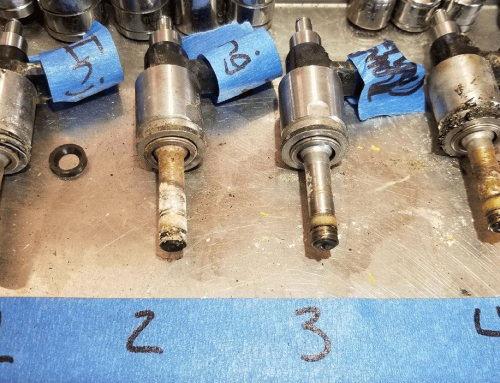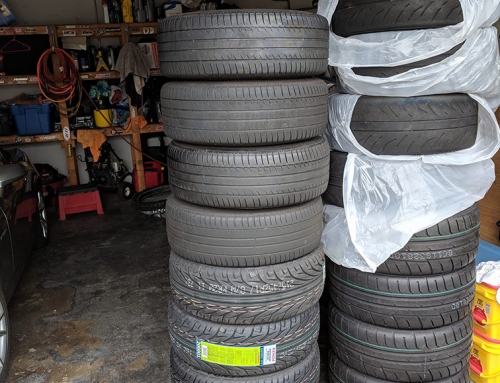There’s a few ways available for how to get data for a car. This can then be used for things like how to draw data onto car videos or how to analyze race track data with an AiM Solo. Here are several options:
Capture Car Data With a Phone
Certainly very common and the easiest to do, is to use the device you’ve already got. There are a couple apps available to record data and/or video. These apps are available for both iPhone and android devices, and include TrackAddict, RaceChrono and Harry’s Lap Timer. Unfortunately nothing is very good on the typical phone itself; the camera may not be as good or offer wide angle views like action cams, car data (like obd2 data) requires additional devices, as does more accurate gps data. Phones operate at 1hz gps signal, which is really rather slow – this results in abruptly moving data when graphed, or smoothened data with guesses filling in the blanks. This is most clearly a poor update rate when looking at something like a go-kart track, which operates within a reasonably tight space and still reasonably quick speeds. Looking at the map below, this is what a tighter space and 1 hz data looks like, clearly not very smooth. If data and video synchronization are done manually, it generally makes it a bit more challenging as well.
Alternatively, here’s a graph with 10hz AiM Solo DL acquired data. Note how much smoothly all the displays are rendered, and the map as well, although I made it a bit small in this video. I also have things like throttle pedal position, negative g’s (for brake), and my oil temperature rendered here.
It would be recommended to get at least an antenna if not an OBD2 device to be able to capture data at a greater frequency, such as 5 or 10 hz, or 10 samples per second. I believe the antenna always dictates the sample speed. I don’t think all OBD2 devices are the same, and those with greater bandwidth with be able to keep up with greater requests for more channels to be recorded and/or to be able to poll data at 10 hz vs. just repeat the last signal received in the data. Also, android will work with anything, but an iPhone will only work with Apple approved devices unless it has been jailbroken. These devices all use bluetooth.
Antenna and OBD2 device recommendations are as follows:
| iOS approved? | Yes | Yes | Yes | No | No |
| Speed | 20 hz | 10 hz | 5 hz | 10 hz | 5-10 hz |
| iOS approved? | Yes | Yes | No |
Capture Data with an Action Camera (GPS Only)
Capturing GPS data is becoming more popular with action cameras – although note most is at 1 hz. While they begin recording right away, the gps seems like it may take some time to spin up, so they still may require a more manual synchronization of captured data to video. As of this writing, the following are the latest cameras and speeds. Cameras with wifi and bluetooth can interact with the apps above as well, particularly Harry’s seems to have the most integration.
| Speed | 20 hz | 5 hz | 1 hz | 1 hz |
The Contour is the odd man out in this group – it’s only 1080p and a much older camera – although it’s the only one currently able to write at 5 hz. The Garmin apparently is advertised as having a 10 hz antenna but has yet to have a release as of this writing that allows any write rate greater than 1 hz. This makes the Contour a pretty decent option for capturing data on something like a kart or helmet or all sorts of quick/easy/portable things. Edit: The GoPro on the latest firmware appears to write at 20 hz – awesome!
Capture Data with a Car Data Acquisition System
There’s something to be said about a more direct and dedicated data acquisition system. All the above involve juggling a lot of different components and connectivity. Bluetooth and/or wifi connections to multiple devices as well as battery management can be a lot to juggle and a bit of a pain, particularly if one just wants to pop on their helmet and go out for a drive. The following are more dedicated track solutions.
First, we’ve got the AiM Solo DL. It’s a great solution; whether v1 or the new version 2.
| 10 hz | 10 hz |
The Solo DL will capture gps and most data at 10 hz; some channels that are not very important will be captured at 1. The device is super portable if OBD2 isn’t used, and can simply be popped into a friend’s car. With a little more effort the OBD2 could be brought over as well. The software isn’t the most intuitive to me, but it is great for looking at data about what’s going on with one’s driving and their car as well as comparing the data easily to others who also have AiM data, as shown in this AiM Solo Track Data Analysis. This easily seems to be the most commonly available system on the market today, and I know many people that have it. AiM also has a large line of products that include getting data off the OBD2 or CAN bus, all with varying degrees of options, flexibility, and portability, from these self contained and easily transportable devices up through dash replacements. They have their own cameras and integration as well. I would highly recommend an AiM device for the brunt of us out there that are weekend HPDE warriors.
RaceCapture is another option, although definitely appears for someone looking to do more of a heavy install and configuration/tweaking of their system. It offers rates up to 50 hz. The live streaming abilities are very cool, and this looks like an awesome solution for someone running a real race and with a crew, an awesome solution for anyone running LeMons or ChumpCar to be sure.
There are other solutions down this vein as well, although they get expensive and I am wholly unfamiliar with them and do not know anyone running them. Most people I know with a device run AiM, and a LeMons racer runs RaceCapture on his own car and a LeMons car.







Leave A Comment